Cavity Wall cat flap fitting
Choosing to wall mount a cat flap often gives you greater choice on where it can be fitted, so a discreet corner or even under the stairs might be the ideal spot.
If you don’t plan on moving anytime soon and you like the fact it is the most secure of fitting options, then perhaps a wall cat flap is the way to go.
After fitting hundreds of wall cat flaps, you can be rest assured that there’ll be no mess, and the job will usually be completed within 2-3 hours.
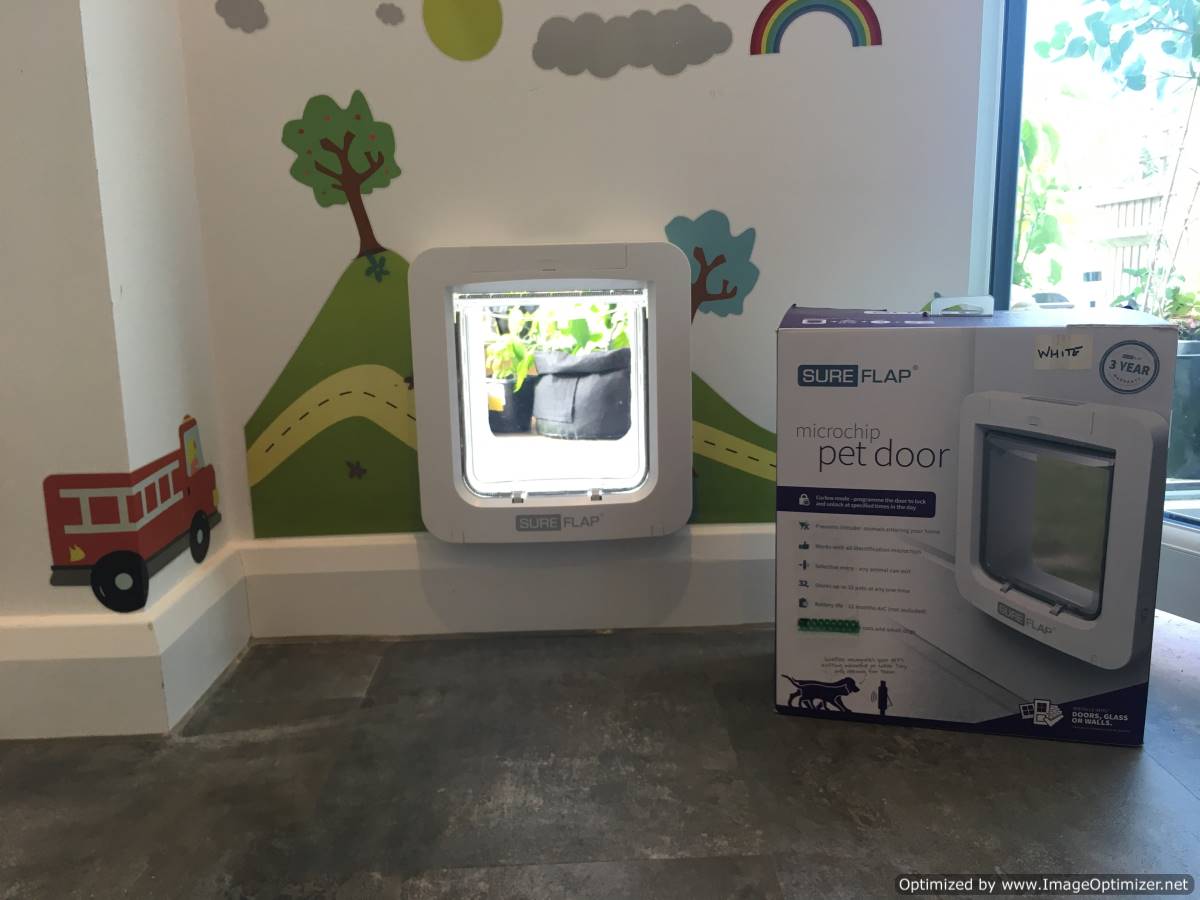
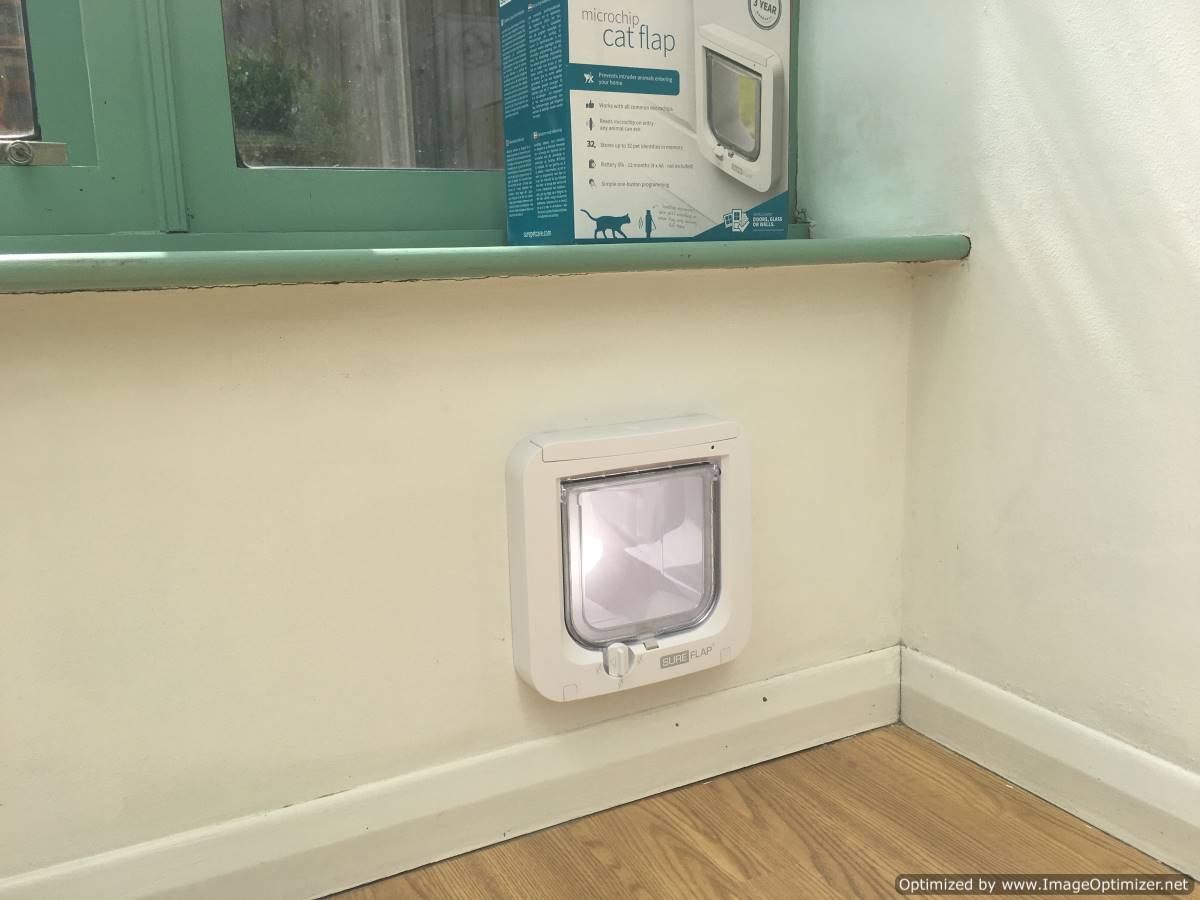
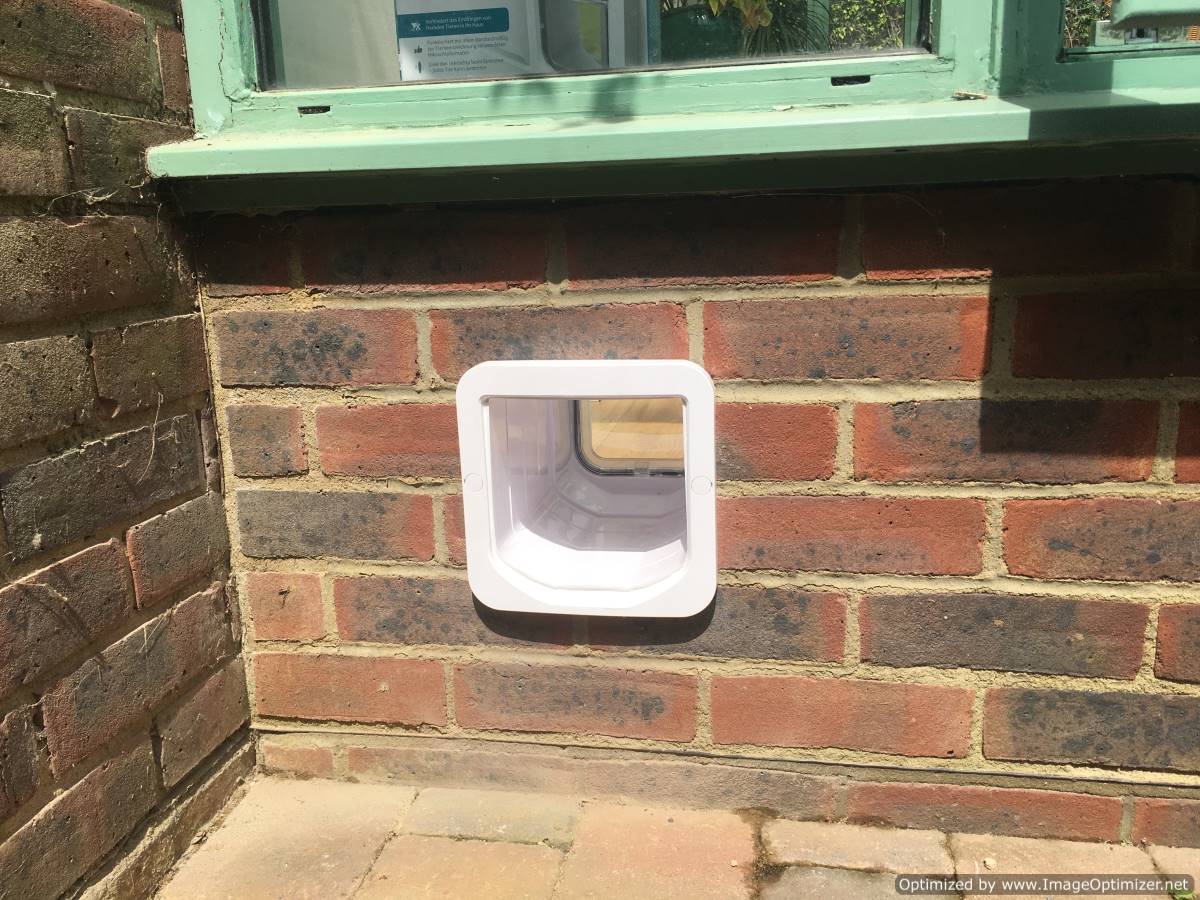
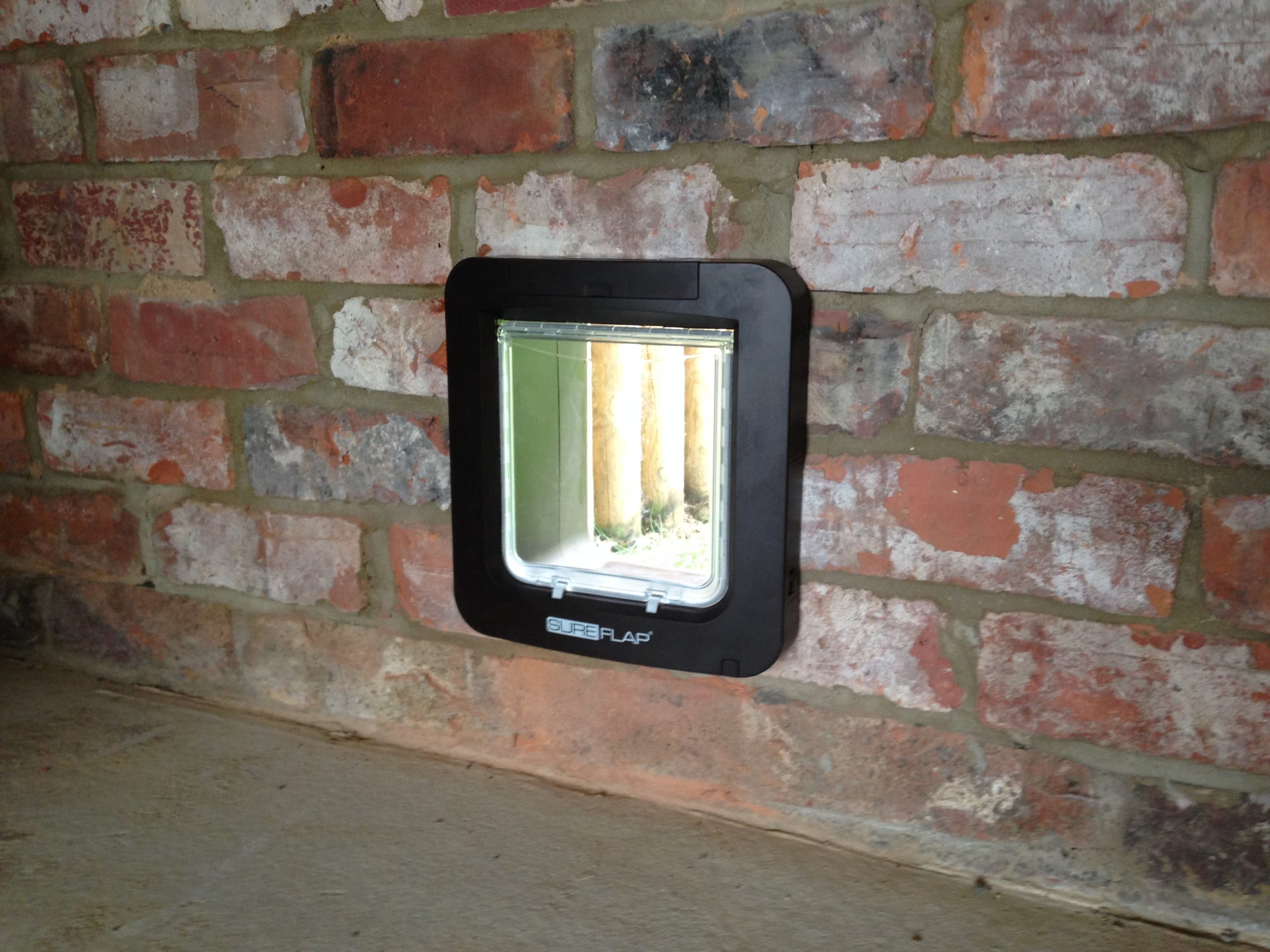
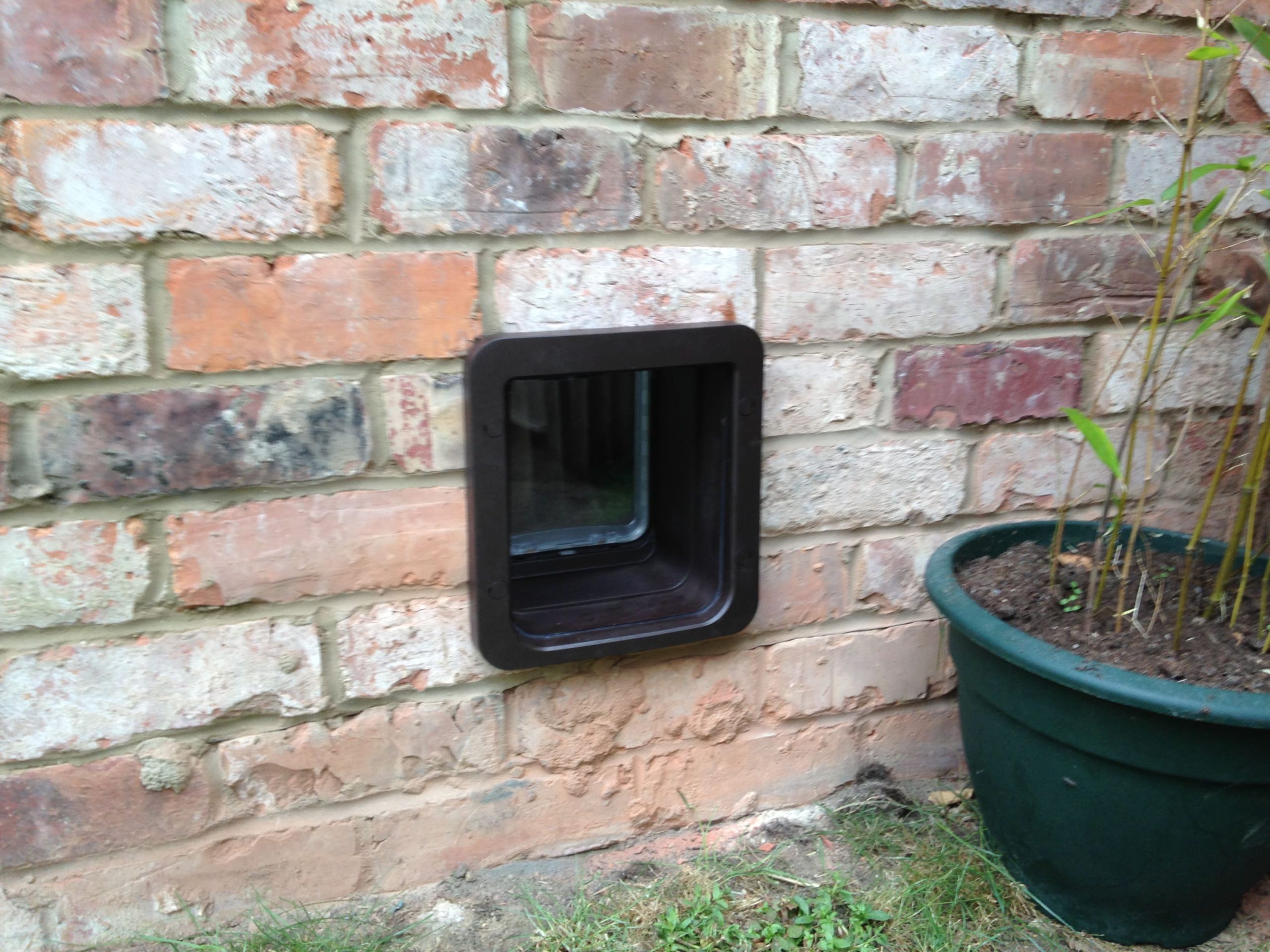
single skin brick wall
Perhaps you have a garage or outhouse that you would like to give your cat access to.
Much the same as a cavity wall, we can fit a cat flap in your single skin wall leaving no mess.
Which cat flap do you recommend for wall installations?
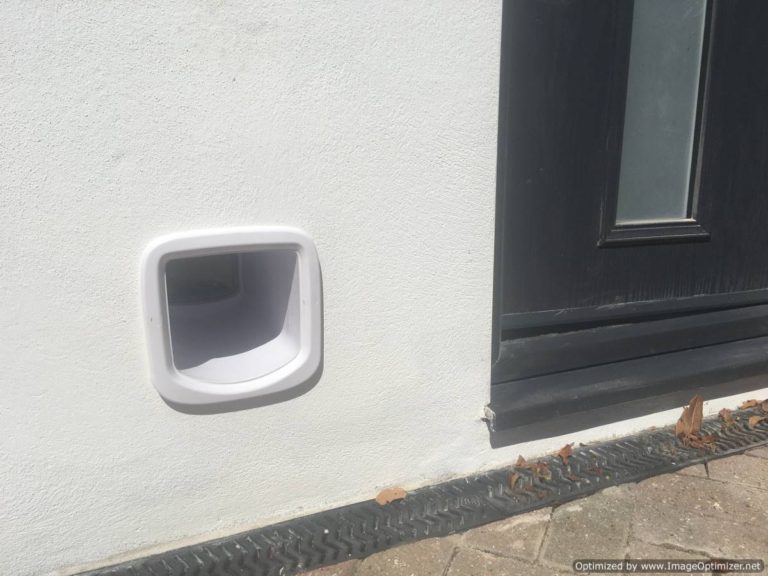
Suitable for all walls the Standard Pet Safe Manual 4 way locking cat flap comes in either white or brown to match. With a self lining tunnel extensions this cat flap can be fitted to even the thickest of walls.
It’s easy to operate 4 way manual lock and generous flap size allows for cats up to 8kg to come and go as they please.
A greatly improved design on the older Pet Safe cat flaps, these are more robust and have a better draught seal than their predecessors.
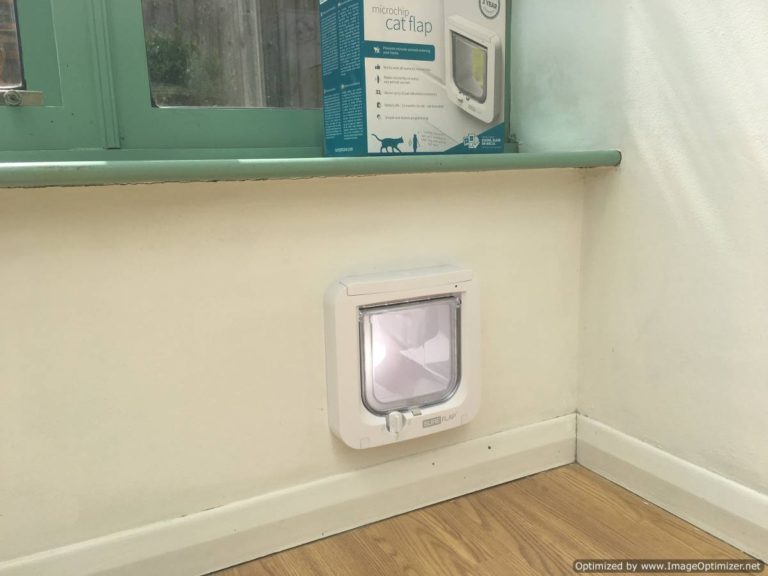
If you do require microchip recognition to keep out strays and neighbouring cats, then the Sureflap Microchip cat flap will work with your cats existing microchip, and is easily programmed by the push of a button.
It has a 4 way manually operated lock, and with a clear battery low indicator, there is no fear of locking your cats out when the batteries run out.
Although the draught seal around the flap is not the best, it’s easily the most reliable and well designed microchip cat flap avaiable.
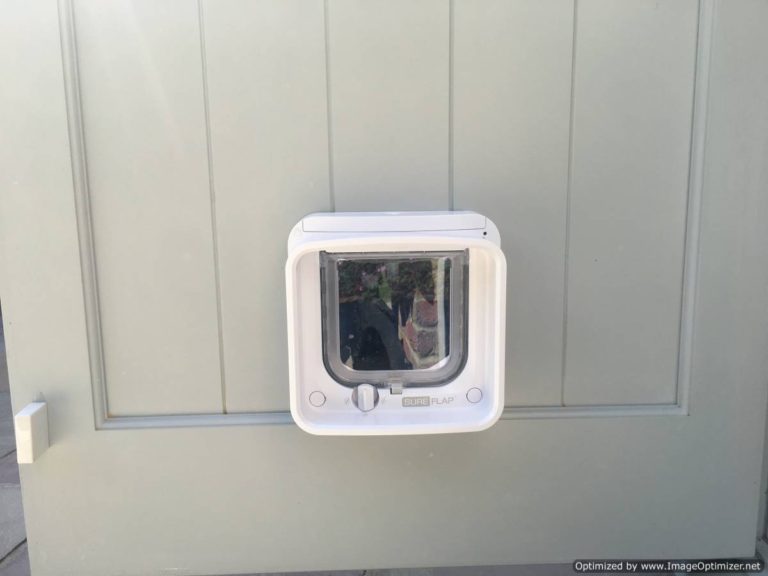
For owners of multiple cats, especially those with kittens, the Sureflap Dual Scan and Connect models offer great benefits.
These have selective exit as well as entry. This is great if you need to keep a your kitten or an ill cat in, whilst the other cats are free to come and go as they please.
The Dual Scan has the manual 4 way lock and low battery indicator, the same as the Sureflap Microchip Cat Flap. Whereas the Connect version also benefits from a smart phone app for remote locking, notifications and programmable curfew modes from anywhere that you have internet access on your phone!
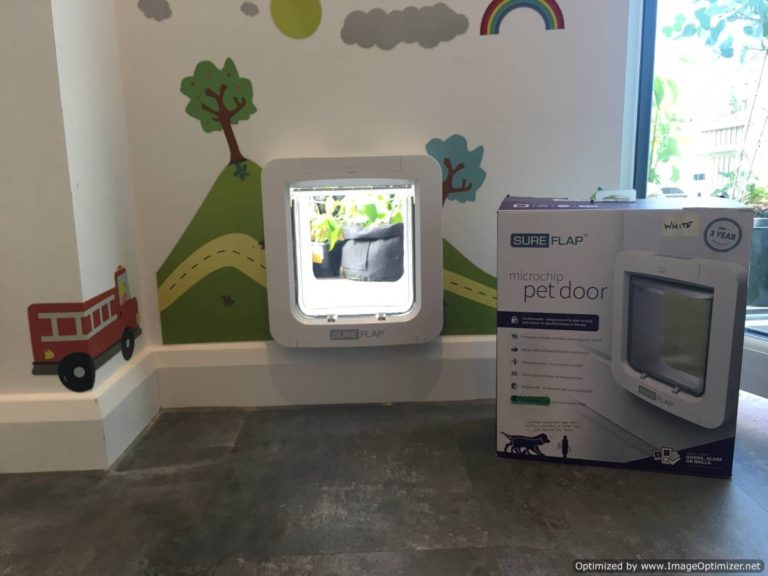
For those of you with larger cats, or even small dogs up to 10kg or 34cm to the shoulder, requiring microchip recognition, the Sureflap Pet Door if packed with features.
It works with your pet’s existing unique microchip number for selective entry, has a 4 way manual lock as well as a a timed curfew mode to keeps pets in at night if required.
The sturdy construction and dual catch design, mean this is robust enough to withstand even the largest domestic cats and most enthusiastic small dog breeds using it day in and day out.
F.A.Q.
We only fit our cat flaps on the interior side of the wall. This is because this is how the manufacturers have designed them to be fitted. If both an exterior and interior flap were fitted, there is a risk your cat could become trapped between the two.
Provided the cat flap and tunnel are fitted and sealed properly, with a slight fall to the outside, then there is no risk of damp.
Ideally to fit a standard sized cat flap in either a cavity or single skin wall, there needs to be at least 40cm of wall available from. This is to allow a full brick from the edge of the wall to the start of the hole. Much less than this and there is an increased risk of the mortar or plaster work cracking during the installation.
As with any leasehold property, you’ll require the freeholders permission before altering the walls in any way. This applies to any type of work on the fabric of the building. All leases are different, so you’ll need to make your own enquiries before going ahead.
We only really recommend wall mounting the cat flaps above. There are lots of cat flaps on the market that say they are suitable for wall mounting, but the compatible tunnel extensions are often not available. Some manufacturers even recommend using plywood to line the tunnel, which is a big no no, as doing this will very likely introduce bridging dampness. If you have a cat flap already, please get in touch and we can advise whether it will be suitable as a wall cat flap.
Please take a look at our shop section where you can buy everything required to complete your wall cat flap installation either by yourself, or by hiring someone more local to your location.
